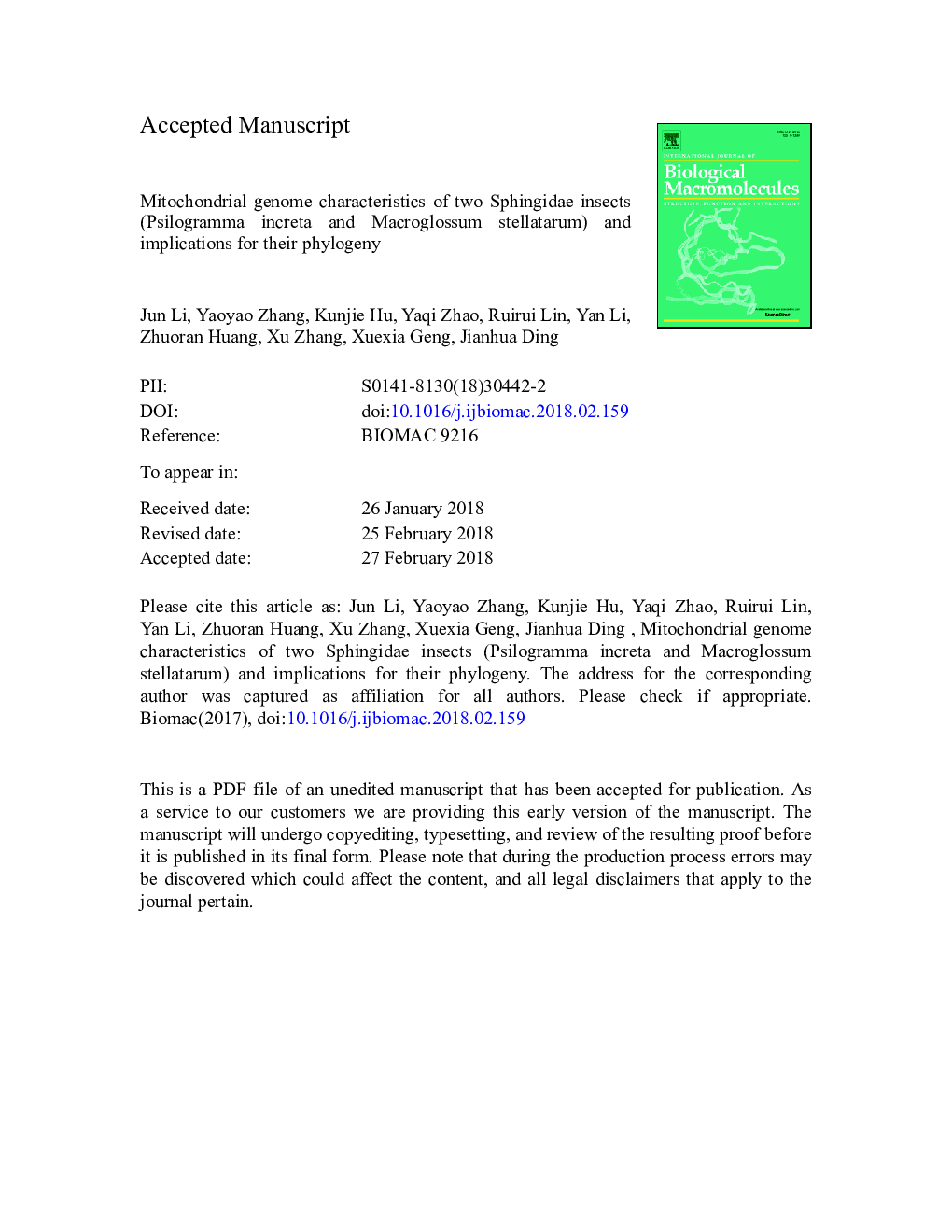| Article ID | Journal | Published Year | Pages | File Type |
|---|---|---|---|---|
| 8327575 | International Journal of Biological Macromolecules | 2018 | 24 Pages |
Abstract
In this study, complete mitogenomes of P. increta and M. stellatarum (Lepidoptera: Sphingidae) were sequenced and compared with other Sphingidae species. The mitogenomes containing 37 genes and a AT rich region are circular molecules with 15,252 and 15,290 base pairs in length respectively. Except cox1 all 13 protein-coding genes (PCGs) are initiated by ATN codons. Most of PCGs terminate with TAA except nad5 and cox1 in P. increta and nad5 and cox2 in M. stellatarum. Ile and Leu2 are the most frequently used codon families in both species and codons CGC, CCG, TCG and ACG are absent in P. increta while in M. stellatarum CGC, CCG, CTG, AGG are absent. All the tRNA genes could be folded into the typical cloverleaf secondary structure except the trnS1 of P. increta which lost dihydrouridine (DHU) stem. The AT-rich region of both insects includes the motif ATAGA followed by a 18-19 bp polyT stretch and 2-3 short tandem repeats (STRs) of TA, and a poly-A element. Phylogenetic analyses showed that the phylogenetic relationships are (((Sphinx morio + Manduca sexta) + (P. increta + Notonagemia analis scribae)) + (Agrius convolvuli) + (M. stellatarum + (Ampelophaga rubiginosa + Daphnis nerii)).
Related Topics
Life Sciences
Biochemistry, Genetics and Molecular Biology
Biochemistry
Authors
Jun Li, Yaoyao Zhang, Kunjie Hu, Yaqi Zhao, Ruirui Lin, Yan Li, Zhuoran Huang, Xu Zhang, Xuexia Geng, Jianhua Ding,
